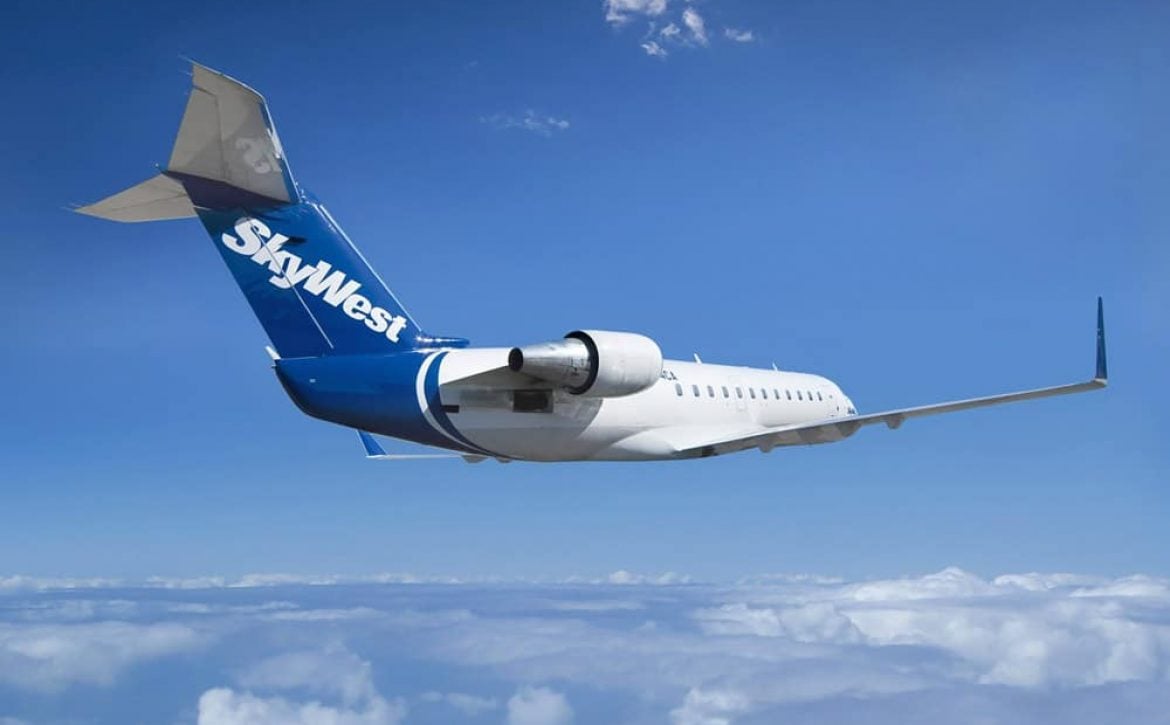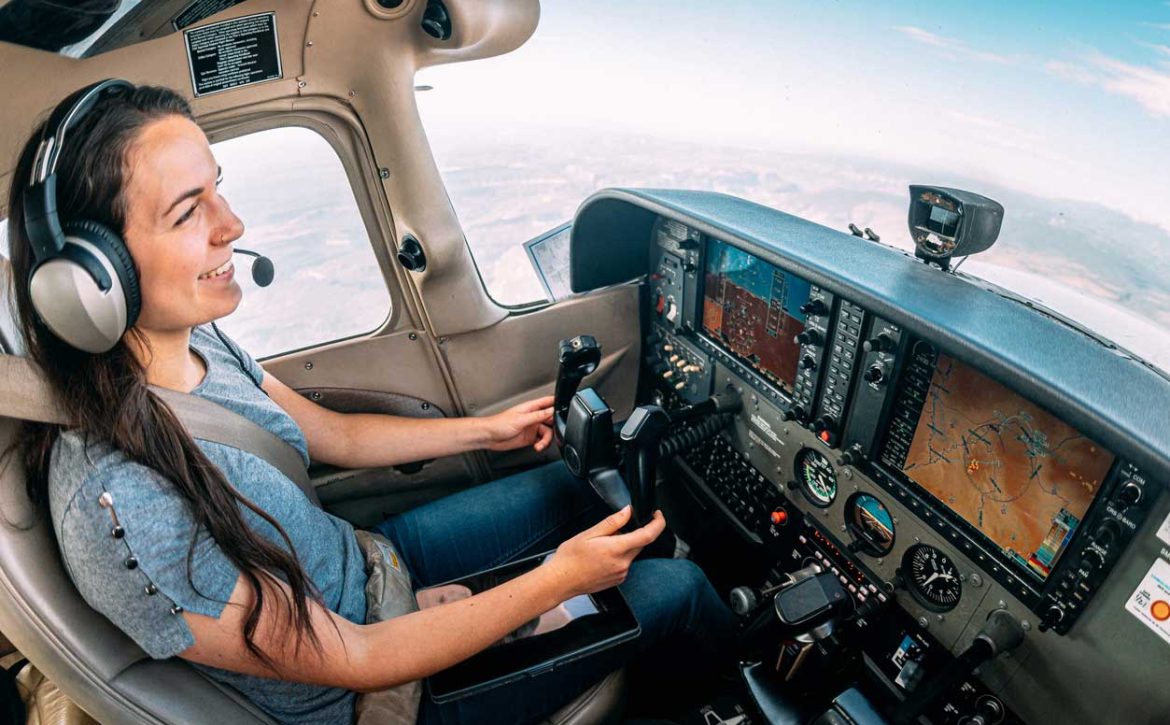Modern jet airliners come equipped with a multitude of indicators and switches. Strict attention to detail during commercial flight training facilitates the safe carriage of passengers.
Noah Timmins
Becoming a commercial pilot, or an airline transport pilot, according to the FAA, requires 1500 hours of flight time. In the context of working, this would take nine months of full-time work to complete, just to enter the bottommost rung of commercial piloting. Even the most dedicated zero-to-hero first officers complete their generic flight training in 18 months and sometimes spend an extra six months finishing their type rating.
Commercial flight training takes so long because the FAA must ensure that carriage pilots can successfully complete their tasks every time. The act of ferrying persons requires strict adherence to safety rules and regulations in order to be completed successfully. This exposes itself in many different forms: pilots complete their tasks with written checklists, maintenance facilities undergo FAA safety audits, and every person involved in a flight, including ground crew, line technicians, pilots, flight attendants, schedulers, and fuelers, must have extensive and rigorous training on their specialty.
Type-specific Training
Each aircraft operates as a type. A pilot qualified to fly a Boeing 767 does not automatically gain qualification to fly the similar Boeing 777. These two aircraft have remarkably different cockpit layouts, which form a critical component of safe flight. After spending thousands of hours piloting a 767 on long-haul oceanic flights, a pilot jumping into a 777 could reach up and, for example, disable the electronic engine control instead of the yaw damper. The positions of these switches are different in these two airframes, so the pilot’s memory of location is incorrect.
Additionally, two aircraft delivered to separate fleets could even have opposing cockpit layouts. Both Southwest Airlines and WestJet Airlines are delivery customers for Boeing’s 737NG aircraft, but they request slightly different cockpit layouts. While 99% of the cockpit of these two aircraft operators are identical, that 1% difference creates an issue. After all, in-flight accidents only occur when multiple things go wrong at the same time, something commercial flight training is designed to address.
The classic story to illustrate this point is one less-known among the general public. Today, the FAA standard for switch direction requires that to turn a system on, its switch must go up, regardless of where the switch is located. Activating hydraulics on a Boeing 737 entails flicking a switch on the cockpit ceiling up, which is a backward motion. TWA, a vintage airline that no longer flies, requested a cockpit layout from manufacturers wherein all switches pointed forward or up in the activated position. Now, activating this same hydraulic system on the 737 entails flicking a switch on the cockpit ceiling forward, or down.
TWA’s cockpit layout choice here created a major problem for pilots transitioning to or from the TWA fleet. Retraining requires vast amounts of time and money to break the physical habit of switch direction. In an in-flight emergency situation, the difference between throwing a switch forward or backward can seem minute, but could start a chain of events culminating in an airframe loss.
In 1996, a pilot destroyed a Gulfstream GIV when attempting a cross-wing takeoff at Chicago Executive Airport. No one aboard survived the crash. The aircraft veered off the runway into the grass, suffered airframe damage, became airborne, and then impacted terrain next to the airport. The official NTSB ruling points to a single switch in the cockpit that was selected incorrectly.
Large jets have nose-wheel steering through the rudder pedals and a secondary system through a hand tiller, allowing for more extreme nose wheel control during taxi. This particular system, on the GIV, allows the pilot to disconnect the rudder pedals from the steering system, steering only with the hand tiller. This position is intended for use only during a taxi situation. Unfortunately, the pilot – on his preflight – failed to notice this switch, leaving it in the pedal disable position. Thus, during rollout, he lacked the ability to control the nose direction with the rudder pedals, sliding off the runway.
This single selector switch could have made the difference between life and death. Earlier, the GIV had been flown by a different charter company with a different preference for nose wheel steering. Additionally, the pilot in command was relatively inexperienced with the GIV aircraft and may have forgotten about this selector switch. In either event, the pilot noticed the nose veering off the runway, attempted to correct it with rudder pedal input, and did not realize it was disconnected.
This highlights the necessity behind commercial flight training needing to address even the smallest issues. Type-specific training must be in depth and detailed, highlighting every system responsible for aircraft control, no matter how insignificant. In this case, the pilot in command had 16,000 hours of flight time, a remarkable achievement. However, he only had 500 hours in the young GIV type aircraft, meaning that the existence of this selector switch was something that did not exist for 15,500 of his flight hours.
Even Circuit Breakers Are Important in Commercial Flight Training
Beyond cockpit switches, circuit breakers are a crucial part of any advanced flight training procedure. There is a very specific and detailed procedure for electrically disabling systems by opening circuit breakers and locking them open. This ensures that the system, physically, cannot be reset so it remains open. Pilots and crewmembers must be vigilant in noticing any circuit breaker irregularities and responding to them appropriately.
TWA Flight 841 touches on this issue. The pilot was flying a Boeing 727 in 1979, in level flight, clear skies, with the autopilot engaged. Suddenly, without warning, an odd buzzing sound began and the airplane entered an inescapable right roll, becoming inverted twice with the nose pointing down. Accomplishing every task in the book for slowing the aircraft down, he managed to level off after a substantial altitude loss and later land the aircraft without any loss of life.
This incident occurred for one specific reason: the flight engineer – a necessary crewmember in the old style 727 cockpit – was using the lavatory when the pilot set up the airplane for level flight. One of the classic “cut the corner” strategies employed by cowboy TWA pilots was to extend the flaps one notch with the leading edge slats disabled, extending the span of the wing and allowing for a faster groundspeed. This operation was never approved of or stated in any TWA pilot training documents, but was passed down the ranks through tribal knowledge.
Disabling the leading edge slats entails pulling the circuit breakers controlling their operation. Because of this, the pilot had pulled these circuit breakers but left them unlocked, meaning that any person could have simply pushed the breakers and reset the system. The breakers on a 727 are located behind the pilots and right next to the engineer. Upon his return from the lavatory, he noticed the breakers pushed and simply reset them, without calling out to the pilots or informing them of his decision. This caused the leading edge slats to extend since their control circuits were now energized. However, the extreme speed of the 727 in cruise means that the systems are put under tremendous aerodynamic stress, creating the buzzing sound heard. One slat on the right wing ripped off, causing the roll. This was not established until the aircraft landed and the slat was found seven miles from the incident site.
When undergoing commercial flight training, a large portion of time is spent explaining and practicing circuit breaker procedures. Circuit breakers are electrical safety devices that are required to exist on nearly every electrical system on aircraft. They are designed to automatically open circuits when dangerous situations are possible. They also can be opened manually in order to test or purposefully disable certain systems, such as leading edge slats, weather radar, or lavatory flushers.
Airlines have policies and procedures designed specifically to detail how to properly manually open a circuit breaker for testing, maintenance, or deferral. These procedures exist because situations like TWA Flight 841 exist. By improperly locking the circuit breakers the pilot manually opened, and not telling the absent flight engineer, it seemed to the engineer that these breakers had opened themselves. There was no indication or locking device showing that these were manually opened. Standard procedure is to reset the breakers in this occurrence and monitor them for additional openings, so the engineer did so. This one action almost lead to an airframe destruction and potential loss of life.
These systems’ complexity requires similarly complex training. If the pilot had spent twenty extra seconds to properly follow his training and slip a locking collar on the breakers, the whole incident could have been avoided. A simple mistake involving only a single switch or circuit breaker can result in a complete loss of property and life. Thus, the training procedures for advanced and commercial pilots must cover even the smallest situation possible.
Training Responses To Input
Commercial flight training extends beyond simply where the switches and controls are but also what they do. Pilots must anticipate and find the expected result when undergoing training. A typical trainer aircraft has a run-up check where a pilot tests flight controls and engine controls. The expected response from something like an aileron input or magneto switch is tested for by observing the corresponding gauge or control surface. Pilots are trained to look for these responses and make sure that they match what should be expected.
These kinds of checks are necessary even on larger aircraft. An Airbus A320 operated by Lufthansa named Papa Whiskey exhibited trouble at take off in 2001 at Frankfurt. The pilot could do nothing to stop the left wing from drooping on takeoff, causing the first officer to assume control and fly the plane up to a level flight path at 12,000 feet. The pilots, investigating the issue, found the pilot in command’s control stick was giving backward input compared to the expected response. Pulling it right cause the aircraft to bank left and vice versa.
This specific flight control problem arose from Lufthansa’s maintenance department, where a complete rewiring of the entire interconnected elevator flight control system was required, a total of 420 wires. This is no small task. Once it was accomplished, the maintenance personnel completed all functional checks as required and signed off the plane as airworthy. Interesting, the functional check required by Airbus does not entail physically observing the control surface or forcing the use of both control sticks in the cockpit.
All of the electronic displays in the cabin indicated that the pilot’s side control stick gave correct control input. The pointers all deflected correctly. One would do well to remember that these pointers are only electrical signals received from a computer in the electronics bay of these aircraft. Two wires had been wired up incorrectly during the rewiring, causing the pilot’s stick – and that one alone – to give opposite input to the aileron control systems. Thus, the state of the indicating system in the cockpit and the physical system on the wing were in disagreement.
Lufthansa modified their training and maintenance manuals to add in physical verification of control surface deflection after performing maintenance, specifically to address this issue. The expected response from the control input was not present on the physical airframe itself, but there is no way a pilot can view that portion of the wing from the flight deck without extensive gymnastics. Additionally, the maintenance personnel were trained to look for a response only in the cockpit, which in this case was not sufficient for proper operation.
In Conclusion
Aircraft are some of the most complex vehicles piloted. They come equipped with myriad control switches and circuit breakers, with complicated interconnections and failsafes. Despite this, extensive and deep levels of commercial flight training are required to properly equip pilots and maintenance personnel to recognize the correct switches to operate, how they operate, and what to expect when they do. It is the goal of every airline to equip their employees with the ability to complete these tasks successfully, ensuring the safe and timely carriage of passengers worldwide.
Get Started With Your Flight Training Today
You can get started today by filling out our online application. If you would like more information, you can call us at (844) 435-9338, or click here to start a live chat with us.
Featured Image: Kent Wien










 Next Step in Your Airline Pilot Training: The Interview Process
Next Step in Your Airline Pilot Training: The Interview Process The Pilot Board or Panel Interview
The Pilot Board or Panel Interview



 An effective mentor is an experienced pilot (or pilots) who will contribute to your overall success as a commercial pilot. A good mentor will educate you, through wisdom and experience, so that you can plot your career path before it ever gets started – and then be there as a guide as you advance your career towards the best aviation jobs.
An effective mentor is an experienced pilot (or pilots) who will contribute to your overall success as a commercial pilot. A good mentor will educate you, through wisdom and experience, so that you can plot your career path before it ever gets started – and then be there as a guide as you advance your career towards the best aviation jobs.
